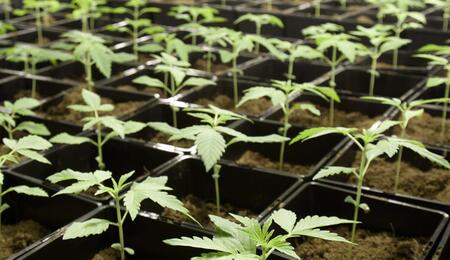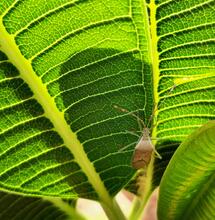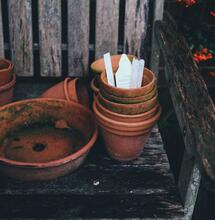Top Tips On How To Get Better Tasting Cannabis

The pinnacle of growing elite cannabis is not to achieve commercial sized yields, or to have the biggest grow systems and technology, however it is to simply deliver a full terpene profile to a beautiful flower.
It seems that most flowers and even extracts these days are tainted with a mild flavour and unhealthy harshness on the lungs. When you walk inside a coffeeshop in Amsterdam or a dispensary in California, these establishments are professional so take a great number of steps to ensure the flowers they produce are top notch. Below are my top tips on how to get the best flavours from your dried cannabis buds. By Stoney Tark / Photos courtest of Dinafem
Starting Off
If you start of with a good strain from a well known seedbank, then even if your plant performs badly, the terpene profiles should still remain the same. Many growers can often testify that they have smoked what looks like garbage outdoor weed that tasted amazing compared to some of the over worked indoor buds that have 10/10 bag appeal. Working with a well known plant like Cheese, O.G Kush, Girl Scout Cookies, Super Silver Haze, Super Skunk and many other well established flavours for example will make a bad grower look good and good grower look great, when done right. The paradox with starting with good genetics is that a really good grower can seem a novice no matter how perfect the bud structure is if the taste does not pack a punch also. Spend the time to find the best seeds rather than ordering a box of clones off the local dealer for convenience. I never personally understood the benefit of having a huge stash of one flavour when you can easily have five jars with five killer flavours.
Selecting The Medium
The argument that organic flowers taste better than chemically grown flowers has been going on for decades. The green conscious grower wants to know that every nutrient they are putting in their medium has a chance to be broken down by microbes and fungus and distributed back to the medium, where it can be leached out of the soil accordingly by the plants roots. I am personally well known for continuously reusing old medium and promoting microbial colonies. One thing I would suggest is to use a blend of coco, worm humus, dry seaweed, bat guano, seabird guano, biochar, old roots, perlite and trichoderma. The medium I use is always topped up and supercharged with living organisms that are present in the worm humus, guano, seabird guano, coco. These all produce enzymes which break down the rich medium that has been treated with blackstrap molasses and humic acids for the previous grows. This is just a tip that I enjoy doing, however you will find it will encourage microbes and fungi and also save you money and trips to the tip, whilst allowing you to achieve some super tasty organic flavours.
Flushing
The most important part of the entire grow cycle and unfortunately because you are not directly hammering the plants with nutrients, many growers don’t pay enough attention to this part. It is usually down to inexperience and a lack of discipline. Flushing basically means using water to act like a solvent and to remove all of the left over salts. The idea is that the electric conductivity of the solution the plants receive is minimal so they have time to use up what remaining minerals are left in the medium. The easiest way to think about it is to put a teaspoon of sugar in a glass, then add measured amounts of water each time to see how long it took for the sugar when stirred to have completely dissolved. The only way to really tell if your flowers are flushed is when you roll a joint, the ash will be white grey and almost fall of the joint with the slightest movement. Not only this the taste of the flowers should be instant on the inhale and whilst coating the lips with a wet mouthwash sensation, the exhale should be as pleasant and serious lip licking should commence.
Organic Compost Tea
Using aerated compost tea is another one of my favourite practices to adopt when growing indoors and especially outdoors. The idea is that you have a bucket of water with an air stone producing bubbles, which over a 24 hour period will aerate the nutrient you put in along with the microbial colony inside the brew. In flower time is when aerated teas are often used but I always advise to use them throughout the whole life cycle of the plant. In the veg stage you can use seaweed and trichoderma, worm castings and trichoderma, ortega and trichoderma and make sure that as a food source you feed a teaspoon of unsulphured blackstrap molasses. Not only will your plants look incredible and the vigour they express speaks volumes, the grow medium will be drenched with billions of microbes and fungus that have been aerated over the 24 hour period. Not only this your plants will enjoy the NPK as well as all the other micro and macro nutrients these listed above will provide. When using bat guano as a main flowering feed, the taste and appearance of the final flowers is incomparable.
Enzymes
Perhaps the most underrated nutrient that growers utilise in their garden, enzymes are a plant’s best friend when it comes to delivering bite sized chelates of food for the roots to readily absorb. In the same way enzymes in our bodies are extremely relevant to our metabolism and digestive systems, think about how important they are then for the plant’s roots. A great tip is to use as many enzyme groups as possible and feed them in addition with your other nutrients from start to finish. Enzymes are like natures dishwasher and nothing works better than a liquid drench of enzyme groups in the medium. Many nutrient companies offer their own and with so many enzymes found across the world from pond cleaning enzymes, to industrial dishwasher enzymes, using cannabis friendly ones supplied by nutrients companies such as Cannazym, Sensizym, Powerzyme, Hydrozyme and many more is the best way to stay on top of your plants digestive system and metabolism. This is also a sure way to break down the remaining unwanted salts into easy to digest particles. The simplest way to have super soft and wet flavours, complimented by a white puffy block of ash.
Hit It With The Bat!
I can not recommend using bat guano enough and the expression ‘ Bat Crazy ‘ came about after the benefits of bat guano on plants was discovered. This is brilliant to use in a fine powder form and it is great to make an aerated compost tea. When you make an aerated tea with a clean bat guano powder, the water once skimmed of any foam will have a caramel golden shine to it which means you are supplying it with liquid gold goodness. There are many forms of bat guano originating from Indonesia, Jamaica, Japan, China and Turkey. Each can have a different NPK depending on the location of the bats, their diets and also the humification state of the guano when processed. The taste that you notice from adding even a top layer of powder and feed will be the difference between day and night for underachieving growers. Not only does using bat guano swell flowers and increase terpene volumes, it also adds a wet flavour to the flowers and kicks the plant into vitality overdrive.
Molasses, Sugar And Honey
You may not even realise it but the organic feeds that are black and shiny and heavy in weight, are a form of blackstrap molasses. Basically a liquid press of sugar cane that is then classed as a humate as it is a state of humification. That being said any humic acid can be in a black shiny form but molasses contain sugar and carbs. Some growers will even use honey, granulated sugar, carbonated fizzy drinks that are high in sugar and other tricks to supply the plants with a fructose base. This is actually an excellent tip to use molasses, to grow heavy thick buds that have serious biomass as well as bringing out the terpenes and final flavours from your flowers.
Drying Your Buds
This is where all the magic happens and it literally is the difference between top shelf meds and low grade garbage. If you were growing an indoor garden of roses, orchids or any other tropical flower, you would expect the final presentation of the flowers to be full of aroma and all sorts of enticing terpenes. If your buds in the flowering room are reeking of dankness and by the time it comes out of the dry room it has lost nearly all that roadkill stench, you have simply dried your prized flowers out wrong. Dry your flowers out in a room that is 15 degrees celsius and get a chilling feeling in the room, whilst many people say dry it at 20 degrees and above, this will not retain the full compound of flavours as when dried for 14 days at 15 degrees celsius.
Curing And Storing
There have been studies that show how cannabinoids break down over time and degrade in darkness. Terpenes also change from live resin to terpenes off a flower that has dried out, so if you have dried your buds perfectly to a water content of 30% but sticky to touch, curing in a glass jar or plastic tub will preserve the terpenes and improve the effect they have when smoked. I have recently written an article that covered my top tips on drying and curing which go into further detail on the correct steps to take at this late stage of the grow cycle. Good luck obtaining the maximum cup winning flavours that you have always dreamed of. Peace Out!



.png)